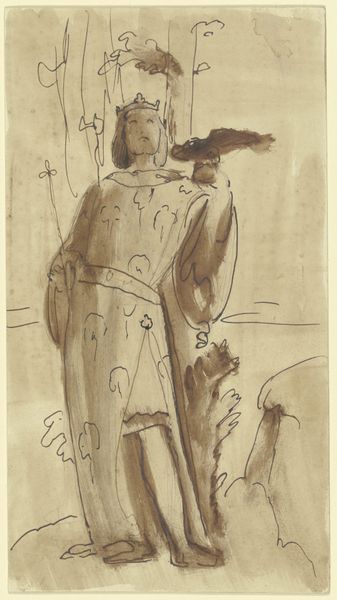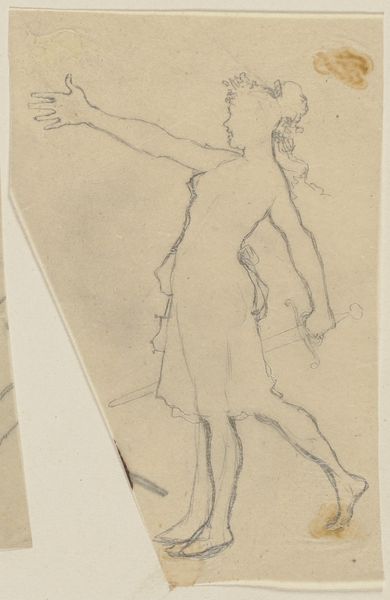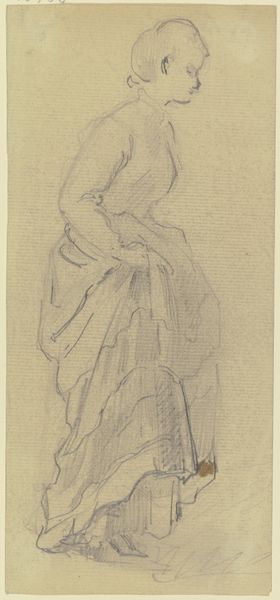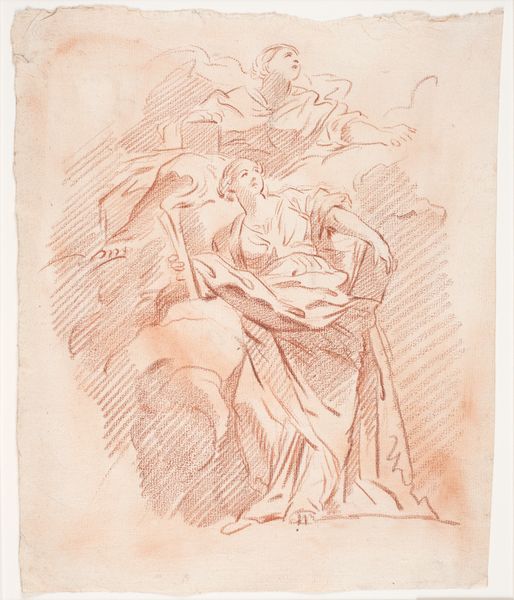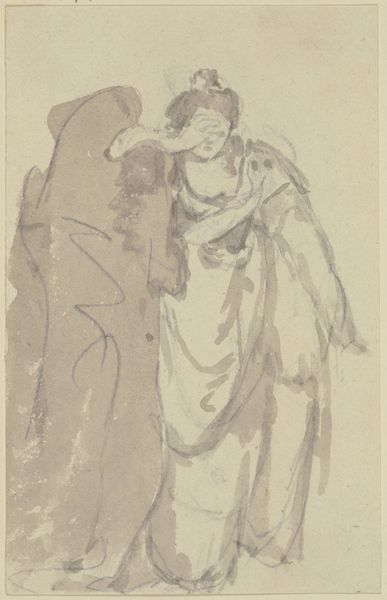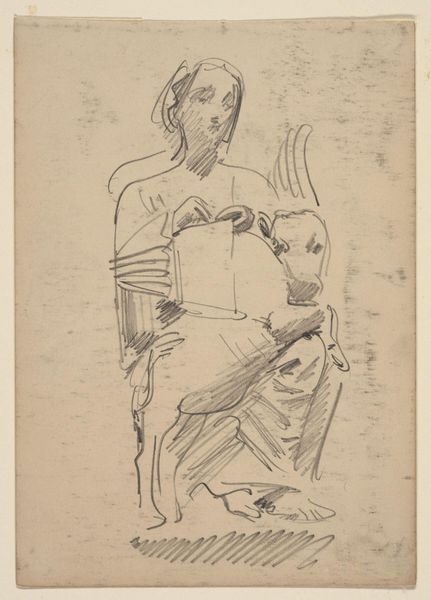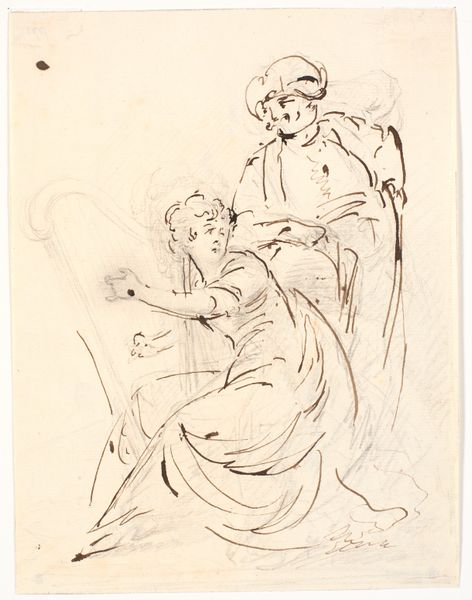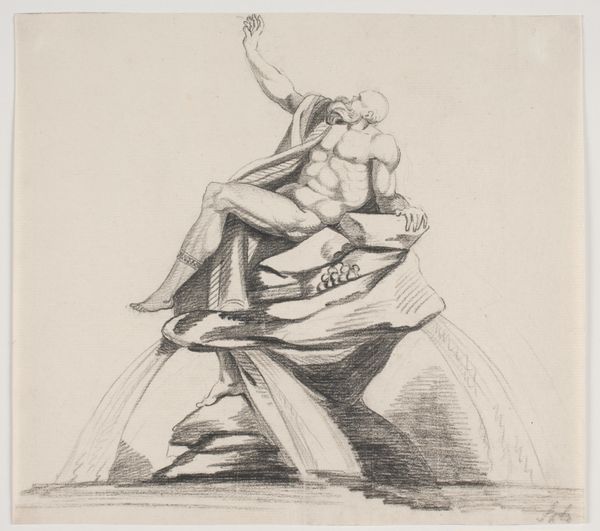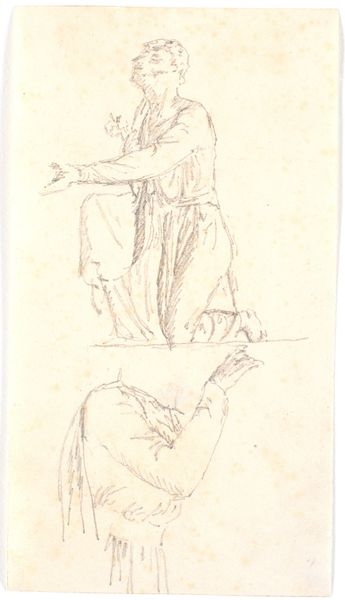
drawing, ink
#
drawing
#
ink drawing
#
figuration
#
ink
#
line
#
academic-art
#
nude
Dimensions: 240 mm (height) x 129 mm (width) (bladmaal)
Editor: So, this is "Udkast til statuettegruppe," a statue group sketch by Gudrun Traustedt, sometime between 1915 and 1924. It's an ink drawing. It has a very raw and powerful feel, doesn't it? The figures are nude, entwined, and there’s a strong vertical emphasis. What stands out to you, initially? Curator: What interests me is the cultural context for this draft. This falls during and immediately after World War I, a period of massive social upheaval. Seeing the female nude here, specifically in Traustedt's graphic style which favors line over mass, invites questions. Is this work referencing, critiquing, or completely detached from the political events shaping society? Editor: Interesting. I hadn’t considered a connection to the war. How would that be relevant? Curator: Well, the starkness of the drawing style itself feels almost like a kind of wartime austerity. Also, nude figures at the time, and this is after Rodin, of course, can have a different significance. Does the intertwined nature of the bodies reflect social cohesion, or is it more about personal struggle or grief reflected by events of public trauma? It really encourages a dialog, no? Editor: Definitely. I also thought that this looked very academic in its... precision? Maybe not. How did academies shape women artists' ability to engage in art historical movements, or, influence such a political reading of art? Curator: Exactly. The institutional acceptance of female artists at this time was fraught, as female artist faced discrimination as to what genres they could access, or what styles would be welcomed in a predominantly male, traditional-art setting. To this extent, and in relation to other themes of societal trauma, academies are revealed as institutions of exclusion but also important foundations that enabled women to access this realm of expression, if they wished. I hadn't noticed so explicitly this tension, and I'm so glad you brought that perspective. Editor: Thanks! It's fascinating to consider how socio-political contexts shaped not just the *subject* but also Traustedt’s style, in its time. Curator: Precisely. That’s the power of art history - to connect what is displayed on the page, to larger discourses!
Comments
No comments
Be the first to comment and join the conversation on the ultimate creative platform.



